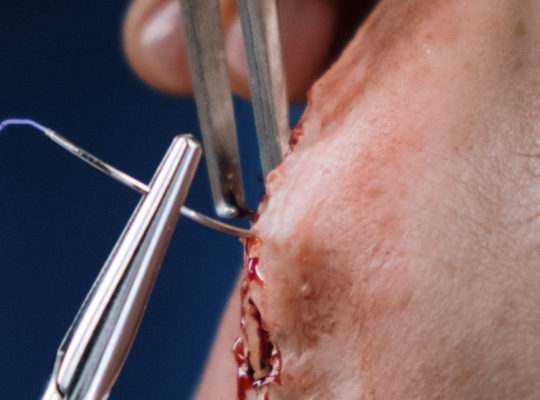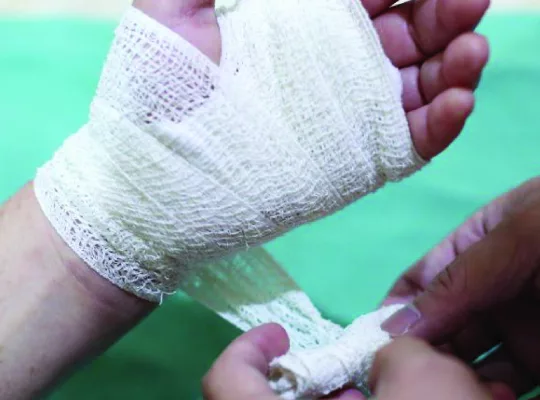Sunburn is a common skin condition caused by excessive exposure to ultraviolet (UV) radiation from the sun or artificial sources, such as tanning beds. It results in red, painful, and inflamed skin, which can be uncomfortable and potentially damage your health.
While ice packs can provide some relief from the symptoms of sunburn, one should know how to use them with caution properly.
Understanding Sunburn
Before delving into the use of ice packs for sunburn, it’s important to understand what sunburn is and how it affects the skin.
Sunburn is the body’s natural response to overexposure to UV radiation. The skin becomes red and inflamed as blood vessels dilate to bring more blood to the affected area. It’s your body’s way of trying to repair the damage caused by UV radiation.
Symptoms of sunburn may include redness, pain, heat, swelling, and sometimes blisters. Severe sunburn can lead to more serious health issues, such as heat exhaustion, heatstroke, and an increased risk of skin cancer in the long term.
How Ice Packs Can Help with Sunburn
Ice packs can alleviate some of the discomfort associated with sunburn in the following ways:
- Cooling Effect: Applying an ice pack to sunburned skin can provide immediate relief by cooling the skin’s surface. This can help reduce the sensation of heat and alleviate some of the pain and discomfort.
- Reduction of Inflammation: Ice can help reduce the swelling and inflammation that often accompanies sunburn. Constricting blood vessels and decreasing blood flow to the affected area can minimize redness and puffiness.
- Numbing Sensation: The cold from the ice pack can temporarily numb the skin.
- Preventing Blister Formation: In some cases, prompt cooling of the skin with ice packs can help prevent the formation of blisters if the burn is severe.
Using Ice Packs for Sunburn
If you decide to use ice packs to relieve sunburn, it’s essential to do so safely and effectively.
- Wrap the Ice Pack: Always wrap the ice pack in something else so that you’re not applying ice directly to the skin, which can be damaging. A well-stocked Pool First Aid Kit should include instant cold packs, aloe vera gel, and other essentials to manage sunburn effectively after a long day in the sun.
- Apply in Short Intervals: Apply the ice pack to the sunburned area for approximately 10 to 15 minutes at a time.
- Avoid Ice Burns: Be cautious not to use ice that is too cold, as this can result in ice burns or even frostbite if left on too long.
Limitations of Ice Packs in Sunburn Treatment
While ice packs can provide some relief from sunburn, remember that they have their limitations.
- Temporary Relief: Ice packs offer temporary relief by addressing the symptoms of sunburn, such as pain and inflammation. They do not heal or repair the damaged skin or address the underlying issue of UV radiation damage.
- Not a Cure: Ice packs don’t cure sunburn. To effectively treat sunburn and promote healing, it’s necessary to implement other measures, including skincare, hydration, and prevention of further sun exposure.
- May Not Address Deep Tissue Damage: Sunburn can affect deeper layers of skin, and while ice packs can provide relief on the surface, they may not fully address the damage that has occurred beneath the skin.
- Not a Substitute for Prevention: The best way to deal with sunburn is to prevent it in the first place. Use sunscreen, wear protective clothing, and limit sun exposure during peak hours to reduce the risk of sunburn.
Other Sunburn Treatment Options
In addition to ice packs, there are several other treatment options for sunburn:
- Topical Sunburn Relief Products: Over-the-counter products like aloe vera gels, hydrocortisone creams, or moisturizers can relieve and promote skin healing.
- Pain Relievers: Over-the-counter pain relievers like ibuprofen or low-dose aspirin tablets can help reduce pain and inflammation associated with sunburn.
- Avoid Further Sun Exposure: Protect the sunburned skin from further exposure to UV radiation by wearing protective clothing and hats, applying SPF 30+ sunscreen to exposed skin, and staying in the shade when possible.
- Cold Compress: Besides ice packs, you can use a clean, damp cloth soaked in cold water to cool the affected area.
- Moisturize: Moisturize the skin with hypoallergenic, fragrance-free moisturizers to prevent dryness and peeling.
When to Seek Medical Attention
In most cases, sunburn can be managed at home. However, you should seek medical attention if you experience any of the following:
- The sunburn covers an unusually large area of your body that affects your everyday life.
- You have severe blisters, fever, chills, or other signs of heat-related illnesses.
- You have extreme pain that does not improve with over-the-counter medications.
- The sunburn isn’t improving with at-home treatment.
Prevention is Key
Preventing sunburn is always the best approach. Here are some tips to help avoid sunburn.
- Use Sunscreen: Apply a broad-spectrum sunscreen with an SPF of 30 or higher and reapply regularly every day, especially after sweating or swimming
- Wear Protective Clothing: Cover as much exposed skin with clothing as is comfortable, including hats to protect your face and sunglasses.
- Seek Shade: Stay in the shade during the hottest parts of the day, typically between 10 a.m. and 4 p.m.
- Stay Hydrated: Drink plenty of water to stay hydrated, as dehydration can make sunburn worse, and it’s essential to replenish lost fluids.
Conclusion
In conclusion, ice packs can be a helpful tool for managing the discomfort of peeling due to sunburn, providing immediate relief from pain and inflammation. However, they should be used cautiously and as a part of a broader approach to sunburn treatment.
Sunburn prevention is always the best strategy, as it reduces the risk of skin damage and the need for treatment. If you experience severe sunburn or if your symptoms do not improve with at-home remedies, it’s advisable to seek medical attention for proper evaluation and guidance on managing and recovering from sunburn effectively.





